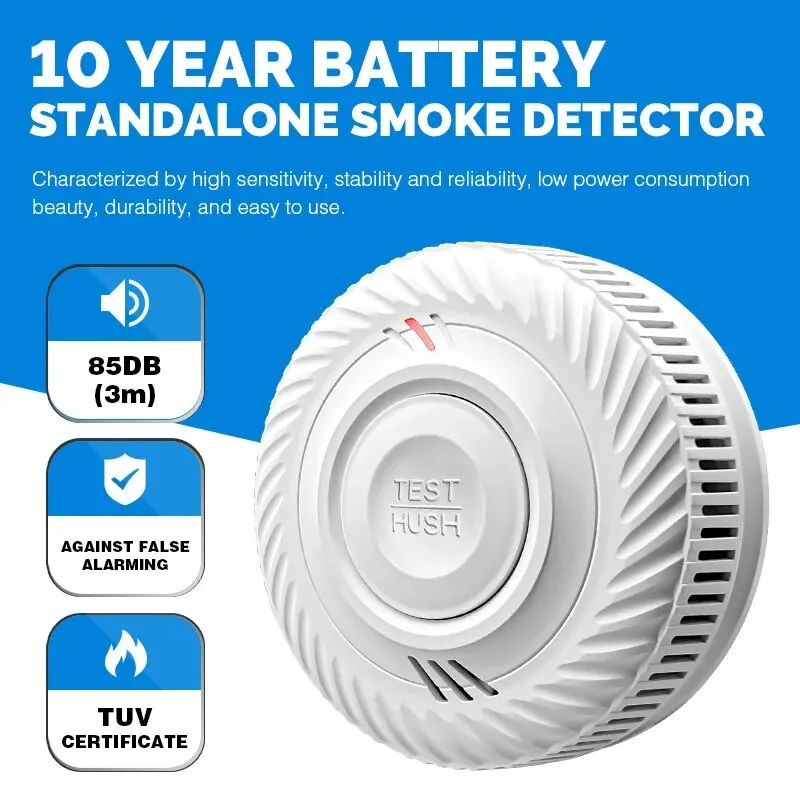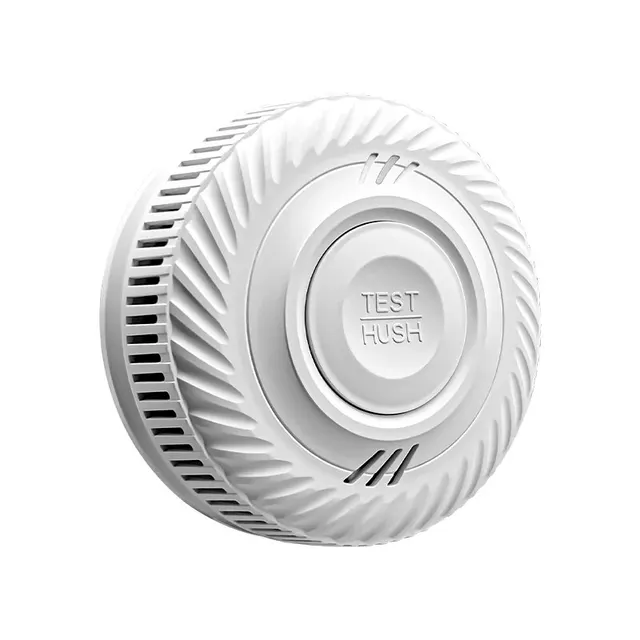Introduction to Smoke Alarm Maintenance
Keeping your smoke alarm in good working condition is crucial. This device can save lives by alerting you early to fire. Proper maintenance includes regular checks and timely battery replacements. When changing batteries, resetting the alarm is an essential step. It ensures the alarm functions correctly after installation. In this blog, we’ll guide you through resetting your smoke alarm after changing the battery. We will cover each step, from disconnecting the power source to testing the alarm. Follow these tips to maintain your smoke alarm’s effectiveness.
Step 1: Disconnect the Power Source
Before you begin the resetting process of your smoke alarm, ensure all power sources are disconnected. This crucial step prevents any electrical accidents and ensures your safety during the reset. For hardwired smoke alarms, disconnect them from any electrical wiring. If your smoke alarm plugs into an outlet, simply unplug it. And for battery-operated alarms, remove the battery. This step is essential for a successful reset of your smoke alarm after changing its battery.
Step 2: Press and Hold the Test/Silence Button
Once you have disconnected all power sources, locate the test/silence button on your smoke alarm. This button is usually placed on the front of the alarm. Press and hold it for about 20 seconds. This will discharge any remaining charge and clear the smoke alarm’s memory. This step is crucial to ensure your alarm will function properly with the new battery. It also helps to stop any chirping that the low battery signal may have caused. After holding the test/silence button, you’ve completed the internal reset of your smoke alarm.

Step 3: Reconnect the Power Source
After holding down the test/silence button, the next step is to reconnect the power. For hardwired alarms, reattach them to the wiring carefully. Plug-in alarms go right back into the power outlet. Then, place a fresh battery into battery-operated alarms. Make sure to align the battery correctly with the positive and negative terminals. This reconnection powers up the smoke alarm with the new battery. A secure power source ensures the alarm is ready for testing. Once this is done, the reset process nears completion. Your smoke alarm’s battery change and reset are almost finished.
Step 4: Testing Your Alarm Post-Reset
After resetting and reconnecting your smoke alarm, it’s important to test its functionality. This ensures that the alarm is operating correctly with the new battery in place. To do this, simply press the test button located on the surface of the smoke alarm. You should hear a loud, clear siren if the alarm is functioning properly. If the alarm fails to sound, or if the siren is weak, you may need to check the battery installation or consult the manufacturer’s instructions for further troubleshooting steps. Regular testing confirms the reliability of your smoke alarm and guarantees it’s ready to alert you in case of fire.
Troubleshooting: When Your Alarm Keeps Chirping
If your smoke alarm continues chirping even after a battery change, it can be frustrating. Here are some troubleshooting tips to help you solve the issue:
- Check the Battery Installation: Ensure the battery is properly installed. The battery terminals should align with the alarm’s contacts.
- Reset the Alarm: Sometimes, a simple reset can stop the chirping. Disconnect the power source, press the test/silence button for 20 seconds, then reconnect.
- Clean the Alarm: Dust and debris can cause the alarm to chirp. Gently clean the alarm’s sensor and cover with a soft brush or cloth.
- Check for Expiry: Smoke alarms have a lifespan. Check the manufacture date on the alarm. If it’s beyond 10 years, replace the unit.
- Inspect for Environmental Factors: Sometimes, humidity or temperature changes can cause chirping. Ensure the alarm is not installed near a bathroom or cooking area.
Follow these steps to ensure your smoke alarm functions smoothly and keeps you safe.

Importance of Regular Smoke Alarm Checks
Regular smoke alarm checks are crucial for ongoing safety. Here’s why they matter:
- Early Fire Detection: Smoke alarms provide early warnings, vital in preventing tragedies.
- Battery Life Monitoring: Checking ensures batteries are operational and alarms are ready.
- Malfunction Identification: Regular tests can reveal if an alarm is malfunctioning.
- Maintenance Upkeep: Routine checks motivate upkeep, like cleaning and battery changes.
- Updated Safety Standards: Frequent testing helps confirm your alarm meets current safety standards.
Smoke alarm maintenance is not just for compliance, it’s for ensuring your safety and the safety of your loved ones. Keep alarm checks on your routine to-do list.
Advanced Features in Modern Smoke Alarms
Modern smoke alarms come packed with advanced features that enhance safety and usability. Let’s explore some of these cutting-edge technologies:
- Photoelectric and Ionization Sensors: Contemporary alarms combine both sensor types for more accurate detection. This technology helps identify smoldering fires and quick-flame fires efficiently.
- Smart Technology Integration: Many modern alarms sync with smartphones or home automation systems. They send real-time alerts and notifications when they detect smoke or are low on battery.
- Voice Alerts: Instead of just loud beeps, some advanced alarms provide voice alerts. They inform you about the type of danger (smoke or carbon monoxide) and its location within your home.
- Wireless Interconnectivity: These features allow multiple alarms to communicate wirelessly. If one alarm triggers, others throughout the home will too, ensuring full-house alert.
- Escape Light Features: In the event of an alarm, this feature activates lights to help guide you to safety.
- 10-Year Battery: Some smoke alarms now come with a built-in 10-year battery. This offers long-term protection without needing battery replacements.
- Remote Hush: This feature lets you silence nuisance alarms remotely from a smartphone, reducing the need to reach the alarm physically.
Incorporating these advanced features into your home’s safety plan can elevate your protection level and peace of mind. Always consider upgrading to models that offer the latest in smoke detection technology.
Enhanced Carbon Monoxide Detection
In addition to smoke detection, many modern smoke alarms are equipped with advanced carbon monoxide (CO) detection features. Carbon monoxide is a colorless, odorless gas that can be deadly if inhaled in large quantities. Alarms that include CO detection can sense dangerous levels of this gas, alerting homeowners to potential threats promptly. These devices often come with specific alerts that differentiate between smoke and carbon monoxide, ensuring that occupants can take appropriate action.
Battery Management and Maintenance Alerts
Modern smoke alarms are engineered to take the guesswork out of maintenance. Newer models include battery management systems that send alerts when the battery is running low or if the alarm requires maintenance. This proactive feature ensures the device is always in optimal working condition, significantly reducing the risk of malfunction during an emergency.

Conclusion: Ensuring Continuous Protection
After resetting your smoke alarm and replacing the battery, you have taken important steps towards ensuring continuous protection for your home. This simple yet crucial maintenance routine guarantees that your smoke alarm is at peak performance, ready to alert you in case of fire. Remember to follow the outlined steps — starting from disconnecting the power source to testing the alarm — to conduct a successful reset every time you change the battery.
To maintain optimal safety, perform regular checks and promptly address any issues like persistent chirping. Embrace the advancements in alarm technology for added features and ease of use, such as voice alerts, smart integrations, and long-lasting batteries. Upgrade when needed to benefit from these improvements.
Your diligence in smoke alarm maintenance plays a vital role in home safety. Keeping your alarms in check means peace of mind, knowing your alerts will function well in an emergency. Stay safe and ensure continuous protection by following these steps and taking advantage of modern smoke alarm features.


